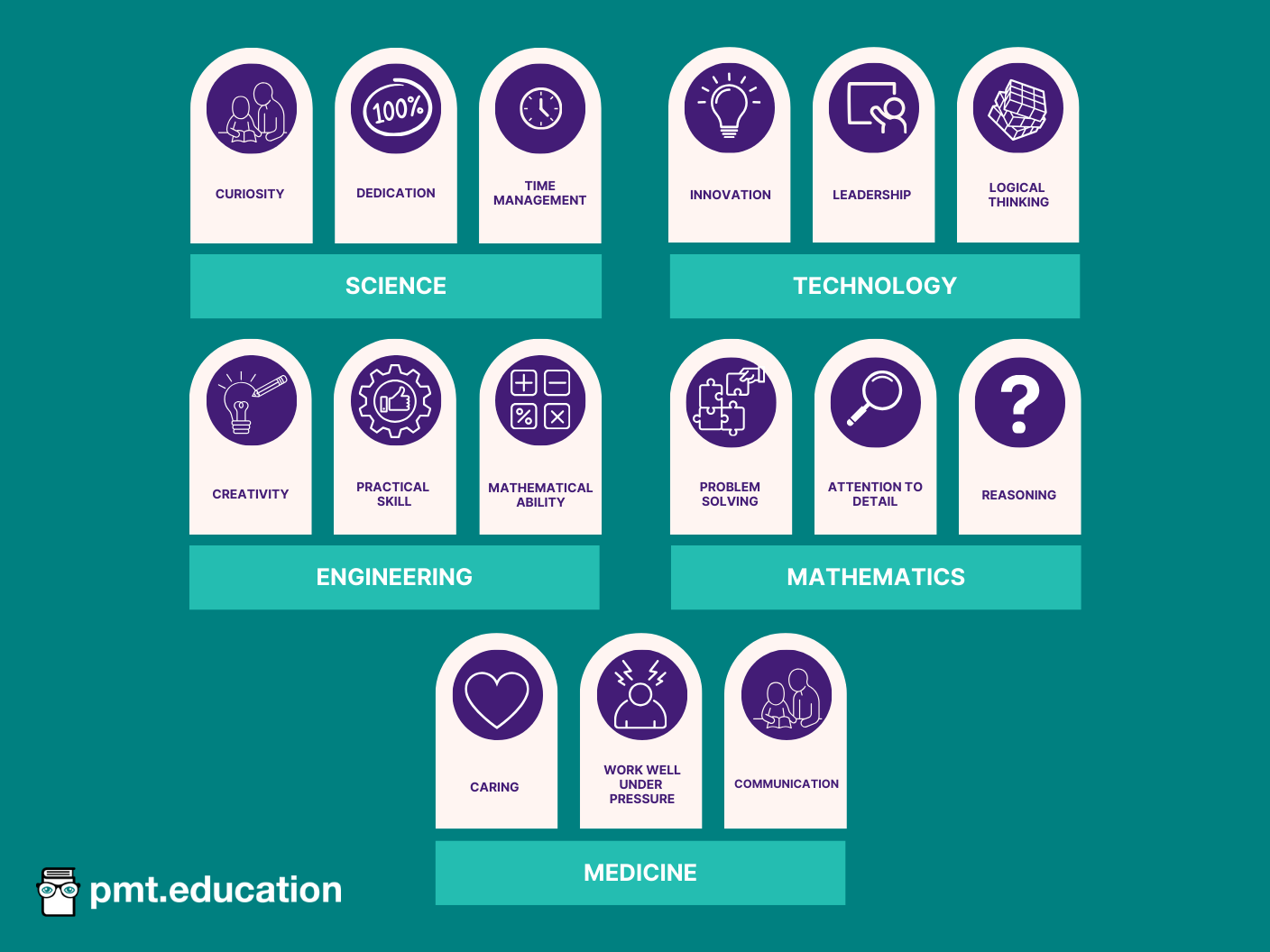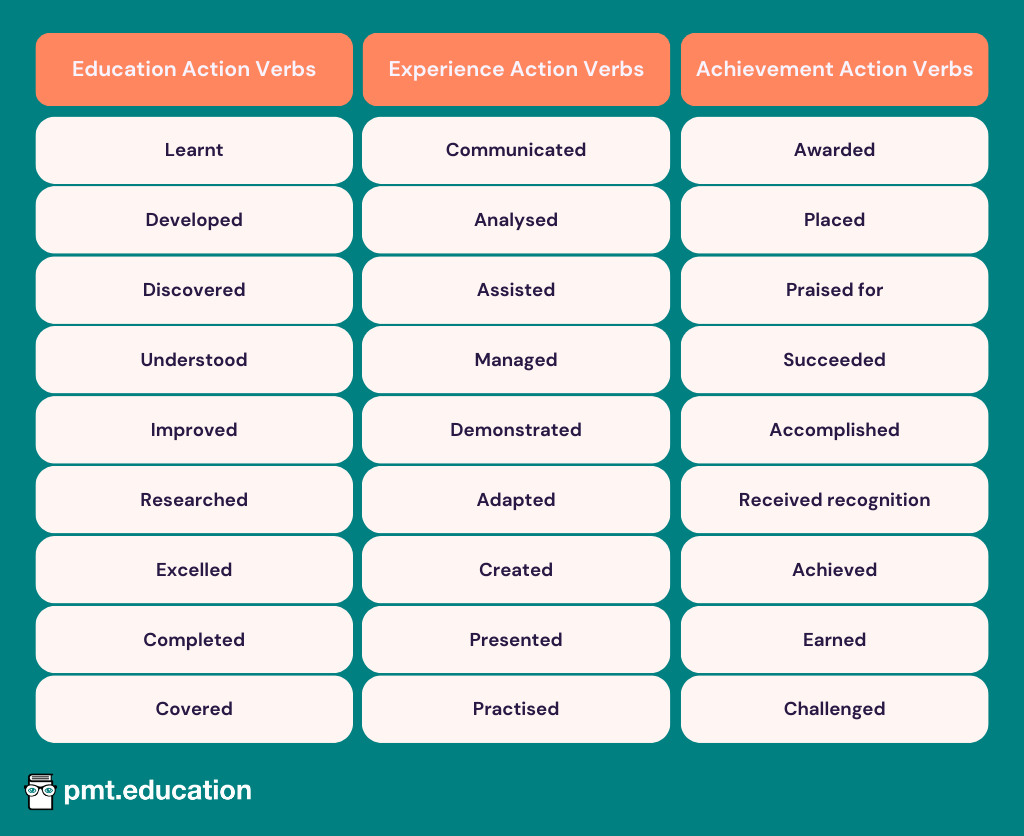Contents:
STEM careers can be incredibly rewarding, offering the chance to work on innovative projects and contribute to advancements that have a major global impact. These factors make STEM careers highly attractive, leading to strong competition for jobs.
To succeed in getting into STEM, it’s essential to navigate the application process effectively, from crafting a compelling CV and cover letter to excelling in interviews. This article will guide you through creating a standout application.
Your applications will be most effective if they are tailored to each role you apply for. You shouldn’t apply to every STEM opportunity you encounter. Instead, you need to identify the roles that best suit your skills and interests, allowing you to focus on crafting high-quality applications for those specific positions. For guidance on narrowing down the wide range of STEM jobs, read our previous article on finding STEM job opportunities.
Once you’ve identified your ideal career path, the first step in the application process is reaching out to the employer with a well-prepared CV and cover letter.
Your STEM CV template
A CV is a short written summary of a person’s work experience, achievements, and education. CVs are used to show an employer exactly who you are when first applying for a role. With STEM employers receiving a large number of CVs per job advert, it is vital to know how to make yours stand out. You want this first connection with your potential employer to be purposeful and leave a positive impression. There are many ways to write a CV, and here we have laid out an effective CV template for applying to STEM careers. Emphasising your theoretical expertise, transferable skills, and hands-on experience is key.

Contact information
Your CV should begin with clear and up-to-date contact information, including:
- Full name
- Phone number
- Email address
- LinkedIn profile
Personal summary
Your personal summary introduces your CV. It is the first section the hiring professional will read, so it needs to be simple and give a positive first impression. This brief paragraph should state:
- Your highest qualification
- Your best-selling qualities
- The STEM career you are pursuing
Naturally, you will be applying to many STEM roles to increase your chances of success. Customising your CV for each can become an overwhelming task. The personal summary, however, is the ideal section to tailor for each role. It’s short yet crucial, setting the context of your entire application. To tailor your personal summary to a particular role, you should:
- Display your highest qualification in a way that best matches the requirements for the role
- Demonstrate the keywords in the job description as qualities you possess
- Make sure this role will enable you to build the STEM career you are hoping for
Skills
STEM employers often value skills as highly as formal qualifications, recognising that expertise can be gained through both practical and theoretical experiences. To make a strong impression, consider highlighting your technical skills and competencies at the start of your STEM CV.
Skills are also known as attributes, competencies, and strengths. They are traits that set you aside from the majority, including:
- Language proficiencies
- Personality traits
- Academic strengths
- Extracurricular experiences
- Practical abilities
The skills section forms a short bullet point list of skills which will be relevant to the specific role you are applying to. If the skills the STEM job requires are not specifically outlined in the job description, consider which skills might be needed in this field. Here are some important skills organised by STEM discipline:

Education
Your education section lists your qualifications in reverse chronological order, starting with the most recent. These should include any STEM online courses and bootcamps you have taken, university qualifications, vocational qualifications, and secondary school qualifications. For each, you should include:
- Qualification awarded and field of study
- Institution name
- Graduation date
- Explanation of relevant coursework, research, or thesis topics covered using bullet points for clarity
Work experience
The next section of your CV is where you will list any relevant work experience you have had. Many experiences that you might not expect can be relevant to STEM, such as hospitality jobs that develop communication and time management skills. Therefore, you should consider each of your experiences carefully to try to relate them to the responsibilities you will have in the STEM job you are applying for.
If you are worried about how to write a CV for a job with no experience, you will be glad to know that work experiences can include paid work, volunteering, internships, work experience programmes, and anything else where you gain insight into a working environment. For each experience, you should include:
- Job title
- Company name
- Duration of employment
- Explanation of your key responsibilities and achievements on this experience and how they link to the STEM job you are applying for, using bullet points for clarity
References
Almost all STEM employers will require a reference before accepting your application, so many people include these on their CV to reduce the number of steps in the application process. A reference is a contact who can account for your work experience or education. The company contacts your references to ask them about your character and to confirm your experiences are true and correct, so make sure you choose your reference wisely! You should gain consent from an individual before placing them as your reference.

In STEM, it may be useful to select a reference who has an awareness of the industry or role you are applying to and can explain why you are suited to this role. Some examples of people you may select as a reference include:
- Teachers or personal tutors
- Mentors
- Managers or supervisors
- Previous employers
Interests and achievements
Interests and achievements should be the final section of your CV, where you can showcase accomplishments that reflect your dedication and work ethic. Examples of achievements include:
- Extracurricular awards and certificates
- Receiving recognition for something
- Personal or organised challenges
- Charity events
- Projects or publications
- Anything else you are proud to have done
This section is also your opportunity to show some personality through your hobbies and interests. These don’t need to be STEM-linked interests; STEM employers are looking for well-rounded individuals who will fit in with their colleagues but bring their own quirks and character. However, if you can relate these interests back to how they will influence your STEM role, then this could help make your CV stand out.
CV style and design
Now that you have the basic structure of your STEM CV, it is important to optimise the layout and style to make sure it aligns with what a STEM employer is looking for.
For STEM careers, a simple, professional, layout with minimal colour is preferable. STEM hiring professionals are looking for clean CVs which use short, clear sentences and consistent formatting in terms of font, spacing, and heading sizes. Your writing style should be professional and in the silent first person, avoiding the use of the words ‘I’ and ‘my’. To describe your experiences in this person, you instead use action verbs. We have compiled some action verbs that may be useful to describe experiences relevant to a STEM career:

As STEM companies deal with a large number of applicants, they often use automatic systems to eliminate CVs from the application pool before they are seen by a human. These systems look for factors which are outlined in our top tips box below and rank CVs using a scoring system. You can use an online CV checker to see how your CV might score and receive personalised feedback.
STEM CV top tips
- Bullet points: Use bullet points for easy readability. Make sure the bullet point style is consistent throughout and that any points are made using full sentences.
- Length: How long should a CV be? Ideally, aim for two A4 pages to keep it concise yet comprehensive.
- Language: Use clear, concise language, avoiding jargon unless it’s widely understood in your field. Keep the language style consistent throughout.
- Keywords: Customise your CV for each job application by incorporating keywords from the job description into explanations of your personal experiences. This will help your CV rank higher with automated scoring systems and shows employers you are specifically interested in their company.
- Write in silent first person: For example, “Led a team of professionals” or “Completed training in”.
What to include in your STEM cover letter
Cover letters are another important element of STEM job applications. This is a formal letter introducing yourself and explaining your reasons for applying to the specific STEM job at this company. Your cover letter should be rewritten for each application and sent to the hiring team alongside your CV, to target your application towards each job.
Staring at a blank piece of paper before writing a cover letter can be daunting. Where do you start? How do you express your interest? Our STEM cover letter checklist will help you get those first words onto paper and make sure you include all the key elements of a STEM cover letter:
STEM cover letter checklist
- State the job you’re applying for
- Explain why you are interested in this position, using the responsibilities outlined in the job description to show you clearly understand what the job will entail
- Explain why you are interested in this company, using the company website’s ‘about us’ section to inform you of their specialisms and their ethos
- Describe what motivates you towards a career in STEM
- Highlight qualities from your CV that are most relevant to this particular role
- You can also use a cover letter to explain any gaps in your CV
- Express your enthusiasm for the opportunity
- End by thanking the employer for considering your application
Mastering your STEM interview
The final stage of a STEM job application process will be an invite to interview. This can be the most daunting part of the process for many people, so the following information explains how best to prepare to help reduce those interview nerves.
Know the interview format
Understanding the type of interview you’ll be having and how long a job interview lasts will help you prepare accordingly.
So, how long do job interviews last? Typically, interviews last between 30 minutes to an hour, but this can vary. It is perfectly acceptable to ask the hiring team how long you should set aside for the interview; this is in fact an attractive display of your time management.

Research the company’s interview process on sites like glassdoor to find out how the interview may be structured. This information will not be available for all companies but we provide advice on how to excel in a general STEM interview format in this article. Possible formats include:
- Formal: Structured interview questions about your experiences and the role itself
- Panel: Several interviewers are present to ask questions
- Informal: The interview forms a casual conversation; make sure to still remain professional and polite
- Group: Several candidates are gathered to discuss questions collaboratively whilst the interviewer assesses your communication skills
- Telephone/video: The interview takes place over the phone or on a video call; make sure to familiarise yourself with the platform being used ahead of the interview, dress smartly, and look at the camera when possible as an equivalent to eye contact
- Technical: Interview questions test your knowledge and the skills required for the role
Common STEM interview questions and how to answer them
STEM interview questions often include prompts to encourage reflection on your experiences, as well as questions designed to assess your problem-solving skills and technical knowledge. To effectively prepare for these questions, follow these three steps:
1. Draft answers to common interview questions
Common interview questions in STEM include:
- Why have you chosen to pursue this STEM job?
- What are your STEM career aspirations?
- What do you know about this company and why have you chosen to work here?
- Describe a piece of research you are particularly proud of.
- Where do you see yourself in five years?
2. For the questions you can’t foresee, write a list of experiences to draw on
Common experiences you might be asked about in a STEM interview are:
- Applying your STEM knowledge to a real life situation
- Requiring problem solving
- Handling a disagreement
- Experiencing leadership
- Overcoming a challenge

3. Use the STAR anagram to structure your answers
The STAR method is a simple way to answer interview questions and provide concrete examples of how you’ve applied your skills in real-world scenarios. STAR stands for Situation, Task, Action, Result, and here’s how it works:
- Situation: From your prepared list of experiences or CV, select a time when you were in the situation the interviewer is asking about.
- Task: State the situation you were in and provide details of the task at hand. What was your responsibility?
- Action: Explain how you acted appropriately in this scenario, detailing any difficulties you had to overcome and linking back to the question. Be specific about the steps you took.
- Result: Describe the outcome and what you would do differently in the future.
Questions to ask the interviewer
You will always be given time at the end to ask questions. You should always use this opportunity as it shows employers you are genuinely considering the role and making the necessary steps to prepare to start. Thoughtful questions that demonstrate your interest in the role and company should be asked; your salary, hybrid work opportunities, and benefits are all questions which can be asked once you receive a job offer.
Examples of thoughtful questions for STEM employers include:
- How would I use my technical STEM skills in this role?
- How does the company support professional development?
- What are you hoping to see from the person hired in this role?
How to handle nerves
As with most things, feeling confident in interview comes with practice. Take all the experience you can get and see rejections simply as another opportunity to practise and improve in interview. If nerves get the better of you, the anagram ‘PASTE’ can help you cover all the points you need to convey:
- Personality: Your personality should be on show from the moment you arrive. The hiring team is looking for character too, so consider what elements of your personality are most suited to the role and be polite and positive.
- Achievements: Share achievements you are proud of and highlight them as a display of your dedication to your pursuits. It also shows you have drive and motivation.
- Skills: Highlight your key skills and how they are directly relevant to the job.
- Team benefit: Describe why you would be a valuable addition to the team, what makes you unique, and how your work style complements theirs.
- Experience and education: Highlight your educational qualifications and any work experience that aligns most with the role.
FAQs
How can you make your CV stand out?
Follow our STEM CV template, making sure to tailor your CV to the job description, and use clear and concise language. The top tips for your STEM CV box can give you a brief overview of how to make your CV stand out.
How do you write a CV for a job with no experience?
It is not only paid work in STEM that counts as relevant work experience. Everybody has some form of experience, even if you may not see how it is relevant to STEM. Focus on the transferable skills your non-STEM experiences have given you, the relevant projects you undertook in your education, and any unpaid internships or volunteer work.
Should you include a photo on a CV?
Photos are included on CVs for some industries, usually where personal image and character are a major factor in employment such as in hospitality and performing arts. However, for a STEM job you should not include a photo on your CV unless requested. This is often deemed unprofessional. Employers can look at your LinkedIn profile if they want to get to know you better.
What should you wear to a job interview?
Business attire is usually appropriate, but research the company’s dress code to help you decide. Most importantly, ensure your clothes are comfortable and professional (and don’t forget to give them an iron!).
How long will it take to hear back after a job interview?
This can vary, but typically, you can expect to hear back within one week to two weeks. Often, interviewers will let you know a time frame at the end of the interview.

Comments